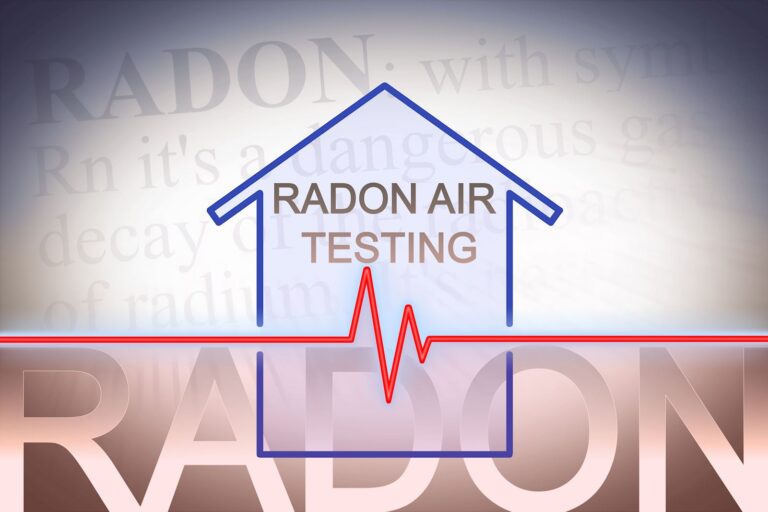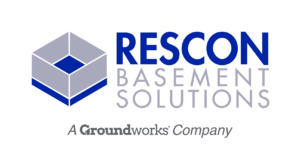Signs You Should Test for Radon
Apr 25, 2024
Signs You Should Test for Radon
Welcome to our latest blog post where we shed light on a silent intruder in many homes – radon. This invisible, odorless gas can pose serious health risks if left undetected. Join us as we explore the signs that indicate you should test for radon in your home and learn how to keep your loved ones safe from its harmful effects. Let’s dive in! Contact Rescon Basement Solutions today for a free quote!
Signs You Should Test for Radon
Have you noticed any unexplained health issues lately? Persistent coughing, wheezing, or difficulty breathing could signal radon exposure. As radon is odorless and tasteless, these symptoms are often the only clues that something might be amiss in your home.
Do you live in an area known for high radon levels? Certain regions have a higher prevalence of radon due to geological factors. If you reside in one of these areas, testing for radon becomes even more crucial to ensure your safety.
Is your home poorly ventilated or has cracks in the foundation? Radon can seep into buildings through tiny gaps and accumulate indoors, especially in basements and lower floors. Regular testing can help identify potential entry points for this harmful gas.
Don’t wait for signs to escalate – proactive testing is key to detecting radon early and taking necessary steps to mitigate its presence effectively. Your family’s well-being is worth the peace of mind that comes with knowing your home is safe from this invisible threat.
What is radon?
Radon is a colorless, odorless radioactive gas that occurs naturally in the environment. It’s formed from the decay of uranium in soil and rocks. When radon is released from the ground, it can seep into buildings through cracks in floors, walls, and foundations. Once inside, it can accumulate to dangerous levels.
Exposure to high levels of radon over time can pose serious health risks. Radon gas decays into radioactive particles that can get trapped in your lungs when you breathe them in. These particles emit radiation that can damage lung tissue and lead to lung cancer over time.
Radon exposure is a significant concern for homeowners because indoor radon levels can vary depending on factors like soil composition, building materials, and ventilation systems. Testing your home for radon is crucial to determine if levels are elevated and if mitigation measures are needed to reduce exposure risks.
How radon enters your home
Radon is a radioactive gas that occurs naturally in soil and rocks. It can enter your home through tiny cracks or openings in the foundation, walls, or floors. This invisible invader can also seep in through well water sources.
Once radon infiltrates your home, it can accumulate to dangerous levels. The gas moves from high-pressure areas like soil to lower pressure ones inside buildings.
Even if your home is well-insulated, radon can find its way indoors. Basements and crawl spaces are common entry points for this silent threat.
To protect yourself and your loved ones, it’s crucial to test for radon regularly. By being proactive about detection and mitigation efforts, you can ensure a healthier living environment for all occupants of your home. Contact Rescon Basement Solutions today for a free quote!
Signs and symptoms of radon exposure
Radon is a colorless, odorless gas that can seep into your home undetected. Unfortunately, this silent intruder poses serious health risks if left unchecked. But how do you know if you’ve been exposed to radon?
Symptoms of radon exposure are often subtle and easily mistaken for common ailments like allergies or the flu. Persistent coughing, chest pain, wheezing, and respiratory infections could be signs that radon levels in your home are too high.
If you notice these symptoms improving when you leave your house and worsen upon returning, it might indicate radon exposure at home. Additionally, frequent headaches, fatigue, dizziness, and even unexplained weight loss could also point to potential radon issues.
Remember, early detection is crucial when it comes to protecting yourself and your loved ones from the dangers of radon exposure.
Lung cancer risk
Lung cancer risk is a serious concern when it comes to radon exposure. Radon gas decays into radioactive particles that can be inhaled, causing damage to lung tissue over time. Even at low levels, constant exposure to radon increases the risk of developing lung cancer.
The danger lies in not being able to see, smell, or taste radon gas. This invisible threat can seep into your home through cracks in floors and walls, gaps around pipes, and construction joints – making it crucial to test for its presence.
Long-term exposure to elevated levels of radon significantly raises the likelihood of developing lung cancer. Smokers are especially vulnerable as the combination of smoking and radon exposure sharply increases the risk compared to non-smokers.
It’s vital to understand the link between radon and lung cancer so you can take proactive steps towards testing for this harmful gas in your home.
Radon detection and mitigation
Radon detection and mitigation are crucial steps in ensuring your home is a safe environment for you and your family. Testing for radon involves using specialized kits that measure the levels of this radioactive gas in the air. These tests are relatively easy to conduct and can provide valuable insights into whether radon is present in your home.
If elevated levels of radon are detected, mitigation strategies can be implemented to reduce exposure risks. Radon mitigation typically involves installing systems that help vent the gas out of your home, preventing it from accumulating to dangerous levels. These systems are designed to effectively lower radon concentrations, creating a healthier living space.
By addressing radon detection and mitigation proactively, you can safeguard against potential health risks associated with prolonged exposure to this harmful gas. Regular testing and proper mitigation measures can significantly reduce the chances of developing serious health issues related to radon exposure.
Is your home safe?
Ensuring the safety of your home and loved ones should always be a top priority. By understanding what radon is, how it can enter your home, the signs and symptoms of exposure, as well as the lung cancer risks associated with it, you are equipped to take proactive steps towards testing for radon.
Radon detection and mitigation services are readily available to help you assess and address any elevated levels in your living space. Remember that radon is a silent threat – without any distinct odor or visible cues – making regular testing essential for peace of mind.
Take control of your indoor air quality by scheduling a radon test today. Knowing whether your home harbors dangerous levels of this radioactive gas empowers you to make informed decisions about protecting yourself and those around you. Stay vigilant when it comes to potential health hazards like radon, because when it comes to safety, ignorance is never bliss. Contact Rescon Basement Solutions today!

